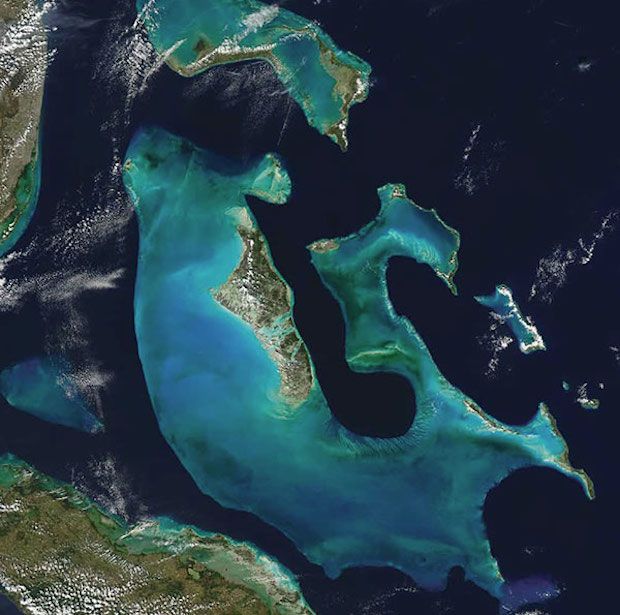Bahamas Bacteria May Feast on Dust from the Saharan Desert

Bacteria living in the warm waters off the Bahama Islands may feed on the mineral-rich dust that the wind carries over from the Sahara Desert, a new study finds.
Winds may blow the dust about 5,000 miles (8,000 kilometers) across the Sahara and the Atlantic Ocean before it settles along the Great Bahama Bank, a raised limestone platform on the ocean floor near the islands, the study reports.
The dust is rich in iron and manganese, elements that helped the researchers map the dust's journey. Scientists measured the amounts of these metals in 270 seafloor samples from the Great Bahama Bank over a three-year period. The areas west of Andros Island, the largest island in the Bahamas, had the highest concentrations of the elements. [7 Crazy Facts About Dust Storms]
Andros Island also has a large concentration of "whitings," stretches of milky-white water created by cyanobacteria that get their energy from the sun through a chemical process called photosynthesis.
"Cyanobacteria need 10 times more iron than other photosynthesizers, because they fix atmospheric nitrogen," Peter Swart, lead author of the study and chair of Marine Geosciences at the University of Miami, said in a statement. "Fixing nitrogen" refers to the process in which organisms capture nitrogen gas from the atmosphere and convert it into a useful form.
The result of this nitrogen fixation? "This process draws down the carbon dioxide and induces the precipitation of calcium carbonate, thus causing the whiting," Swart said.
Swart and his colleagues suggest that the iron-rich dust from the Sahara helped build the Great Bahama Bank by feeding the cyanobacteria. Over the past 100 million years, the wind-swept sedimentation may have fueled cyanobacteria blooms that turned the water white by creating carbonate whitings, the researchers said.
Sign up for the Live Science daily newsletter now
Get the world’s most fascinating discoveries delivered straight to your inbox.
The study is published in the August issue of the journal Geology.
Follow Laura Geggel on Twitter @LauraGeggel and Google+. Follow Live Science @livescience, Facebook & Google+. Original article on Live Science.

Laura is the archaeology and Life's Little Mysteries editor at Live Science. She also reports on general science, including paleontology. Her work has appeared in The New York Times, Scholastic, Popular Science and Spectrum, a site on autism research. She has won multiple awards from the Society of Professional Journalists and the Washington Newspaper Publishers Association for her reporting at a weekly newspaper near Seattle. Laura holds a bachelor's degree in English literature and psychology from Washington University in St. Louis and a master's degree in science writing from NYU.